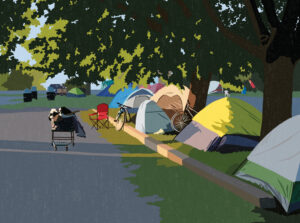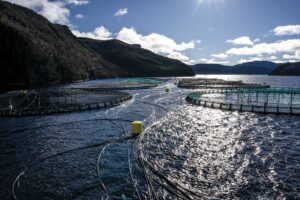
People & Culture
Kahkiihtwaam ee-pee-kiiweehtataahk: Bringing it back home again
The story of how a critically endangered Indigenous language can be saved
- 6310 words
- 26 minutes
This article is over 5 years old and may contain outdated information.
People & Culture

If given the choice, Ray Zahab would pick heat over cold any day. But that didn’t stop him from walking to the South Pole or running across Siberia’s frozen landscape. Now, he is training for another brutally cold run in March, this time across Baffin Island in Nunavut.
In all likelihood, most Canadians will not be running through unrelenting winds, dodging crevasses or hauling a sled with 90 kilograms of supplies behind them. But even in the comparatively balmy winter most people experience, Zahab’s tips for cold-weather running are still helpful.
Remember what your mother always said about layers
“When you’re doing your running, trekking or anything in the cold, it’s always (good to have) layers,” says Zahab, who wears two or three depending on the conditions.
You want materials that work with your body. Sweat is meant to cool you down. However, the weather already does that for you. For the base layer, you will want something that lifts, or “wicks,” moisture away from your skin. This prevents sweat from clinging to you. Fleece is a good heat-retaining mid-layer. For an outer shell, wind-resistance is key.
But don’t overdo it
Everything in moderation. Even on the coldest days in Antarctica, Zahab and his teammates wore a thin base, a middle layer of fleece, and a down-filled windproof top layer.
“You almost want to dress down a little,” he says. “You don’t want to dress so you’re super warm and then go outside and sweat. What do we know about sweating in the cold? It’s not very good.”
You also need to tailor those layers to the conditions you’ll be running in. In Antarctica, because it was so dry there, Zahab’s team’s suits were wind-proof but nowhere near waterproof.
“If you took the fabric from our wind suits and you poured a cup of water over it, it would go right through it like a sieve,” he says.
In Siberia, the air had high moisture content, so Zahab’s gear was more suited to humidity.
“The point is you dress appropriately for the cold and the conditions that you’re in,” he says. “You address the conditions in the best way that you know how.”
Take care of your face
To protect his face at the South Pole, Zahab customized his goggles to have a balaclava sewn directly to them. This not only made for seamless facial armour but also kept the material from lying flat against his skin.
“If you have that in contact with your face and you’re constantly breathing on it, it freezes. You’re going to get frostbite from your balaclava,” he says. Having the face guard hang from your goggles will not prevent the material from building up a nice chunk of ice, but at least it will keep it from damaging your skin.
Don’t let ice get you down
When your world turns into one giant skating rink, it can be difficult to stay upright. Crampons are one way to deal with all the frozen water. But if “do-it-yourself” is more your style, Zahab recommends using very short, hex-head screws for traction. Shoe Goo some screws to the soul of your runners with the head sticking outward. Zahab says it works especially well for city running.
And while you have the Shoe Goo out, you can winterize your runners with pieces of ripstop material. Wind and waterproof, you can lay this cloth over the top of your shoe where the laces are and seal it with the Goo to the rubber rim of your sole.
“Boom. Bob’s your uncle,” says Zahab. “Your feet are not getting cold in that.”
For more about Ray Zahab and the gear he will be using on his Baffin Island run, watch for our April issue.
Are you passionate about Canadian geography?
You can support Canadian Geographic in 3 ways:

People & Culture
The story of how a critically endangered Indigenous language can be saved

People & Culture
For unhoused residents and those who help them, the pandemic was another wave in a rising tide of challenges

Places
In Banff National Park, Alberta, as in protected areas across the country, managers find it difficult to balance the desire of people to experience wilderness with an imperative to conserve it

Environment
Struggle and success in Atlantic Canada, where aquaculturists strive to overcome climate change and contamination while chasing a sustainable carbon footprint